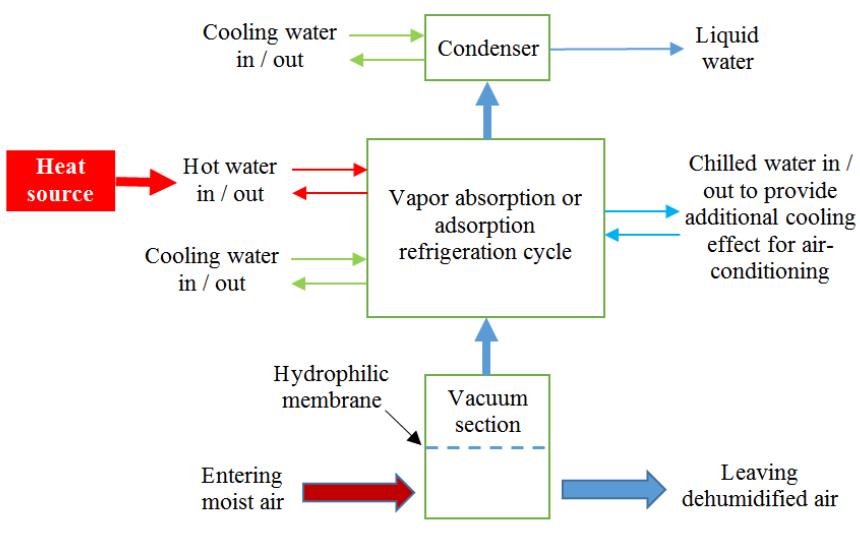
Opportunity
Humidity is an important parameter to affect the thermal comfort of an indoor environment. To dehumidify air for a comfort zone, a certain amount of electricity should be consumed and it becomes an obvious topic for energy saving particularly in hot and humid climate. Some studies show that building energy consumption could be reduced substantially by using efficient dehumidification technologies. Considering the efficiency and special applications, vacuum dehumidification emerges from the traditional dehumidification technologies by its simple principle, non-direct contacting of air with working substrate, continuously working mode and high reliability.
Technology
The present technology relates to a novel vacuum dehumidification system that utilizes a heat-driven approach to generate a vacuum section which is connected to a moist air stream through a selective membrane. Water vapor from the moist air stream is transferred to the vacuum section through a selective membrane due to the pressure difference, thus dehumidifying the air for air-conditioning purpose. The extracted water vapor will be condensed to liquid water through the same heat-driven approach. The heat source can come from renewable mean or other waste heat sources, thus reducing the electricity demand and consequently the carbon dioxide emission.
Advantages
- The heat-driven component can utilize a heat source from the renewable solar energy or other waste heat source (such as the prime mover of cogeneration, trigeneration or polygeneration);
- Compared with current heat-driven desiccant dehumidification, vacuum dehumidification in the system does not add sensible heat to the air and does not require the use of heat exchanger to reduce the air temperature;
- A heat-driven vacuum dehumidification system is usually more energy-efficient than an electricity-driven vacuum dehumidification system for small-to-medium capacity applications;
- More effective and independent control of air temperature and humidity can be achieved by sole handling of the latent cooling load for air-conditioning;
- The configuration of the novel dehumidification system is less bulky than conventional heat-driven dehumidification systems and helps reduce electricity demand and carbon dioxide emission.
Applications
- System of heating, ventilation and air conditioning (HVAC) for Buildings and Infrastructures.




